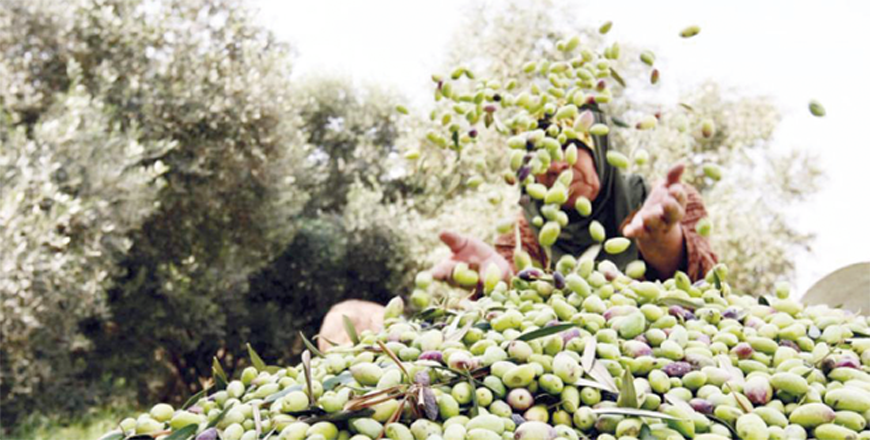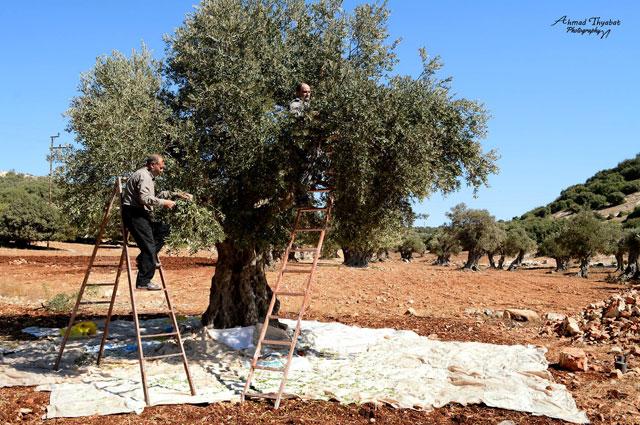You are here
Drought, blight threaten to press up olive oil price
By AFP - Aug 24,2014 - Last updated at Aug 24,2014
MADRID — Shoppers risk paying more for their olive oil this year as a drought in Spain and a blight in Italy wither trees in the two top producers, driving up prices.
Months of dry weather have struck Andalusia in the south of Spain, the world's biggest producer of the "yellow gold".
In the second-biggest grower Italy, the bacteria xylella fastidiosa has shrivelled olive branches in the southern Puglia region.
"Prices will rise by 30 to 40 per cent because there will be fewer olives and therefore less oil produced," indicated one olive farmer in Puglia, Raffaele Piano. "But quality will not be affected."
"There is no cure. The only solution is to burn the infected trees to stop the bacteria spreading quickly," he said.
Producers in parched Spain say they expect their prices to rise too over the coming months as the October harvest approaches, but hesitate to forecast by how much.
In an early warning sign, the market price of virgin olive oil has crept up over recent weeks from 2.40 euros to 2.70 euros ($3.59) a kilogramme, says the Spanish olive oil federation Infaoliva. It warns the rise will continue.
Fewer olives rolling into farmers' nets this autumn makes a recipe for higher prices when combined with ever-mounting demand worldwide.
Olive oil has long been a staple of the Mediterranean diet, and over recent decades it has become popular in cooking in many parts of the world because of its perceived benefits for health.
Demand has surged by 60 per cent in the past 20 years, driven by China, the United States, Australia and Canada, according to the International Olive Oil Council.
Praying for rain
Spain produced 1.77 million tonnes of olives in the last harvest from October 2013 to June 2014, according to the agriculture ministry.
"Last season was exceptional. Production was very big," 40 per cent higher than the average of the previous four years, indicated Cristobal Gallego, an olive oil official for a cooperative of food producers in Andalusia.
"Everything indicates that the next harvest will be very close to the level of the one two years ago" which was just 618,000 tonnes, he warned.
Enrique Delgado Hidalgo, secretary general of Infaoliva, forecast that the harvest could be "between 800,000 and a million tonnes".
"The harvest will be limited but sufficient to supply the domestic and international markets," he said.
The Germany-based analysis institute Oil World gave a more optimistic forecast, estimating that Spain will produce between 900,000 and 1.1 million tonnes this coming harvest.
A price rise, meanwhile, would be "good news for producers", who suffered losses when strong production last year drove prices down, said Thomas Mielke, director of Oil World.
In the life cycle of olive groves, "there is often a decline in production per tree after a year of strong production", which will be aggravated this year in Spain by the drought, he added.
Watering the olive trees cannot make up for the lack of rain in sweltering Andalusia, Gallego warned.
In the heart of the poor farming region of Andalusia, where olive groves blanket the hillsides as far as the eye can see, the province of Jaen alone accounts for 45 per cent of Spain's production. It is among the areas hit by the drought.
Ahead of the harvest which starts in October, farmers will be watching the skies for signs of September rain which could change their fortunes.
Related Articles
AMMAN — Experts predict a 30 per cent surge in the local olive oil production compared with the previous year’s harvest.This increase is par
AMMAN – Jordan Olive Products Exporters Association (JOPEA) on Sunday called on authorities to ban exports of olive fruit due to an expected
POLYGYROS, Greece — Greek organic farmer Zaharoula Vassilaki looks with admiration at a huge olive tree on her property believed to be over













